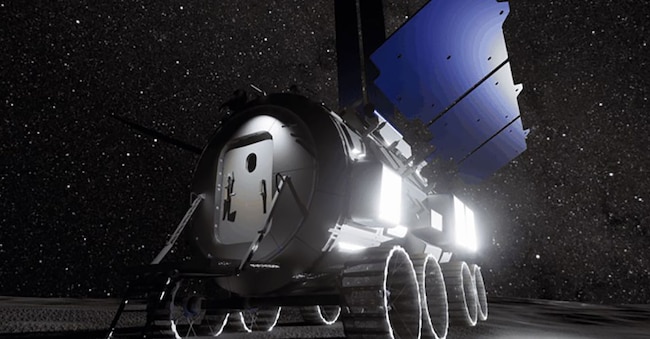The first home of the astronauts who will go to the Moon will be Italian.


The first home for astronauts who will travel to the Moon in the 2030s will be Italian. Our Space Agency, ASI, has entrusted Thales Alenia Space with the final design of the habitation module, presented to NASA last year and approved by the US agency in September. The study phase will last two years and will see Thales Alenia Space Italia as the prime contractor. The company will work in collaboration with Altec , a Turin-based center owned by ASI and Thales Alenia Space Italia, and with other Italian industrial players.
The vehicle, Mph, or Multi-Purpose Habitat, will likely be very similar to the prototype presented a year ago, but it will be self-propelled, with wheels and engines to propel it to a speed of several kilometers per hour. This sort of sophisticated lunar camper, about 4-5 meters long, will have space inside for astronauts to rest, communicate with vehicles on the lunar surface and with Earth, and will likely also have room for some technical-scientific activities. We'll see the final design.
This is excellent news, also for the American Artemis project to return to the Moon, which sees NASA as the main proponent and has so far been joined by 53 nations, Italy among the first. NASA is going through a difficult time, far from it: the Trump administration is planning a substantial budget reduction, reportedly as much as 40%, along with that of all US research agencies. Funding for Artemis has reportedly recently been secured in other budget categories as well, but such a massive reduction in NASA's resources will certainly complicate matters and risks putting China first on the Moon, at the South Pole, in the early 2030s.
Italy, however, is at the forefront of this important project, which will bring humanity back to the Moon, but this time to stay there, building homes, laboratories, roads, and launch points from the Moon to the planned cislunar orbiting station, already under construction, or directly for a return to Earth.
Seen from afar, perhaps on one of these beautiful summer nights, the Moon is a friendly and even winking presence, but standing on it is a very hostile environment.
The first major difficulty is due to the lack of an atmosphere that allows cosmic rays to reach the ground without problems, and for humans above a certain quantity they can be lethal.
If there's no atmosphere, it's obvious you can't even think about breathing, so astronauts' suits must serve both as shields from cosmic rays and energetic particles arriving from the Sun and as systems that guarantee at least air and water. In practice, contrary to what you might think, they are actual spaceships protecting space workers. Among other functions, we can add that spacesuits must allow for radio communications, power supply, and other functions; considering that astronauts must also move as easily as possible to get around and work, we understand that designing these envelopes is not easy, often making astronauts appear clumsy. Furthermore, on the Moon, gravity is one-sixth that of Earth: a 60-kilogram person there "weighs" only 10, with the result, visible in the Apollo mission films from over 50 years ago, full of falls, of having to learn to walk on lunar soil.
The lack of atmosphere then creates a major problem with the temperature, which ranges from 150 degrees to -150, to give you an idea, and is very clear, in the sense that, ideally, if we were exactly where the solar illumination ends and we spread our arms, one hand, in the illuminated part, would be at 150 and the other would freeze at -150. It's clear that these are not simple conditions to take into account.
Lastly, and certainly no better than the other conditions, we have the problem of dust, extremely fine, a practically uniform layer several centimeters thick, which sticks to the astronauts' suits and equipment, pervading everywhere, blocking or even contributing to the failure of instruments and mechanisms, starting with the rover wheels, as has happened several times. Consider the problems caused by dust clinging to the astronauts' suits as they return to the habitation structure: a real nightmare.
From this list of problems, which we have not exaggerated, it is clear that it is not simply a matter of building a sort of lunar bivouac, similar to those at high altitude on Earth, but of designing a highly sophisticated, safe, and efficient structure for this century's lunar program. Thales Alenia Space, with its partners in this endeavor, will reach the final construction stage in a couple of years: the launch to the Moon is scheduled for 2033, certainly hoping that the current impasse over launchers has been overcome. We are indeed in a critical situation, both due to the problems associated with NASA's unfortunate choice of the revised and upgraded SLS launcher, which has already caused years of delays with respect to the schedule, and due to the substantial failure of the latest test launches of Elon Musk's Starship, the largest and most powerful rocket ever designed.
News and insights on political, economic, and financial events.
Sign upilsole24ore





-%2520CookUnity%2520Prepared%2520Meals.png&w=3840&q=100)